Celebrating International Women’s Day: 11 Pioneering Artists You Should Know
Posted on 7 March 2018 by Liverpool Biennial
Sachiko Abe, Cut papers, 2010. Photograph by Thierry Bal
In celebration of International Women’s Day, our minds turn back to the incredible artworks that artists have shown in and around Liverpool over the past 20 years. The experiences of women are central to some of these artists' work, whilst others have gained recognition for blazing a trail in the contemporary art world.
1. Nicola Costantino
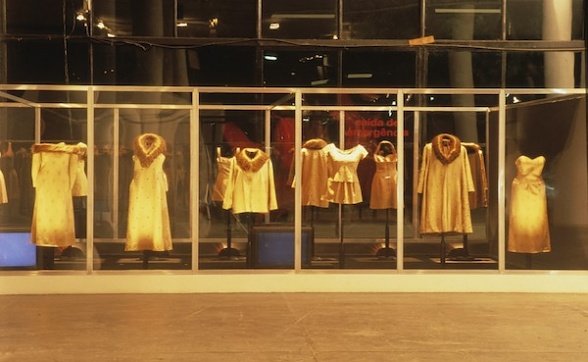
Nicola Costantino, Human Furriery (Peleteria con Piel Humana) (installation view), 1995 - 1998
Nicola Costantino is an artist who has become well known for her silicon sculptures and clothes resembling parts of the human body. For the very first Liverpool Biennial in 1999, she presented an installation in a prominent Liverpool shop window of seemingly stylish garments. On closer inspection, the material turned out to be latex and used motifs directly moulded from the intimate parts of human body. Possibly viewed as a statement in support of animal rights, it could also be seen as a feminist statement on the rag trade and the commodification of women’s bodies.
2. Yoko Ono
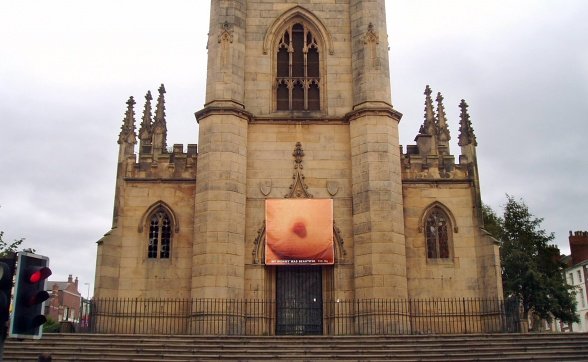
Yoko Ono, My Mummy Was Beautiful, 2004. Image courtesy Liverpool Biennial
Yoko Ono has been credited with being one of the originators of conceptual art. My Mummy Was Beautiful consisted of the widespread distribution in the city of two images: of a woman's breast and vagina. The project can be linked thematically with many earlier works by the artist that present an objectified and dislocated view of the body. When it was installed for Liverpool Biennial 2004, it caused a fair bit of controversy.
3. Monica Bonvicini
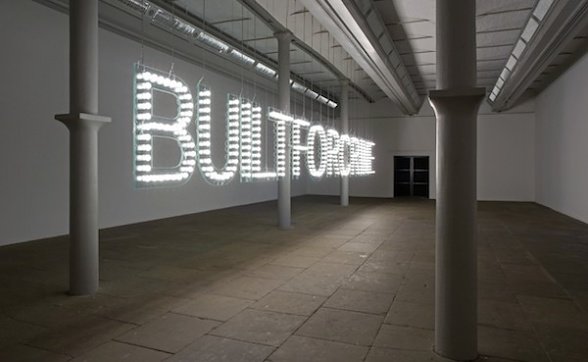
Monica Bonvicini, BUILTFORCRIME, 2006. Image courtesy Liverpool Biennial
Bonvicini explores the relationship between power structures, gender and space. For Liverpool Biennial 2006, she installed this imposing sculpture at Tate Liverpool which spelt out the phrase ‘BUILTFORCRIME’. Each letter was made from safety glass and lights, with the inner layer of each letter partially shattered yet still retaining its form. Glass was the material of choice for great modernist architects such as Le Corbusier and Mies van der Rohe, who were known for the utopian visions presented by their buildings. By cracking the glass, Bonvicini obliterated these ideals and their patriarchal under-pinnings.
4. Lisa Reihana
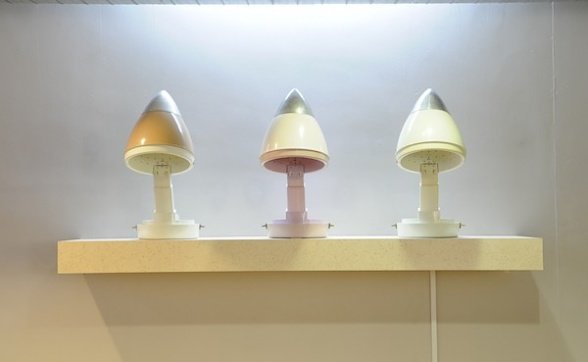
Lisa Reihana, Colour of Sin Headcase Version (installation view), 2008. Photo: Adatabase
The work that Lisa Reihana presented at Liverpool Biennial 2008 was typical of a multimedia artist whose practice is concerned with place, identity and community. Lisa Reihana’s sound installation Colour of Sin: Headcase Version took its place amongst the normal bustle of the bar inside FACT. 1970’s hair dryers were converted to relay an intimate dialogue, exploring internal passions against the banality of external life: the details became increasingly fractured, while the compelling and provocative story probed conventional perceptions of gender and sexuality.
5. Yayoi Kusama
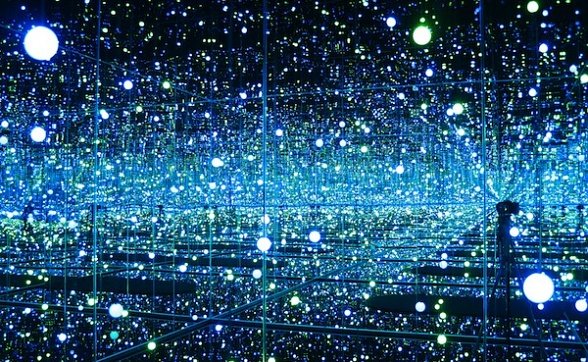
Yayoi Kusama, Gleaming Lights of the Souls, 2008. Image courtesy of Victoria Miro Gallery / Ota Fine Arts, Tokyo
In Gleaming Lights of the Souls, Yayoi Kusama's installation for Liverpool Biennial 2008, visitors were asked to enter a tardis-like chamber, whose small interior unfolded into a magical encounter with infinity. Often linked with the psychedelic art movement, Kusama herself traces her obsessive and infinite patterning back to the hallucinations she began to experience as a young child in the 1930s. Today, her work has become synonymous with long queues and the desire to capture that perfect selfie.
6. Sachiko Abe
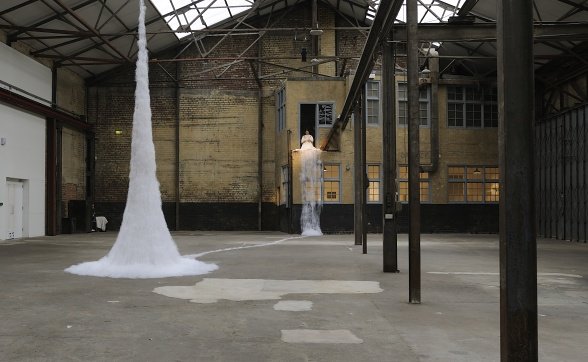
Sachiko Abe, Cut papers, 2010. Photo: Thierry Bal
Sachiko Abe’s began her career as an artist after leaving Japan's Self-Defense Forces because 'the life of artists seemed so free'. Almost paradoxically, her work explores the ideas of duration, repetition and constraints. In Cut Papers, presented at the now-closed A Foundation exhibition space as part of Liverpool Biennial 2010, Abe invited the audience to experience an intimate space in which the constant snipping of scissor blades was the only measure of time passing.
7. Carol Rama

Carol Rama, The Cabinet of Carol Rama, 2010. Photo: Thierry Bal
An engagement with the self and the effect of trauma in modern life has been a constant subject in Carol Rama’s work. Exhibited at Bluecoat in 2010, The Cabinet of Carol Rama included dresses made and worn by the artist, along with watercolours, collages, sculpture and photographs. The selection spanned a sixty-year period, and effectively created a very intimate space that referenced the female body and hinted at sexual encounters.
8. Christina Ramberg
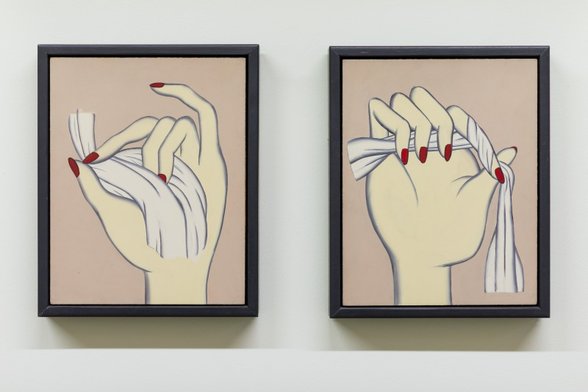
Christina Ramberg, Hand, Handkerchief, 1971. Photo: Roger Sinek
Featuring everything from handkerchiefs to skirts, lingerie to shoes, Christina Ramberg's work was presented at Liverpool Biennial 2014. Her work includes images of bodies and body parts, used in paintings that link traditional costuming and garments with anatomy and morphology, and injecting them with a feminist punch. Her paintings come from an interest in the cultural identification of images, exploring how things associated with the feminine are represented.
9. Betty Woodman
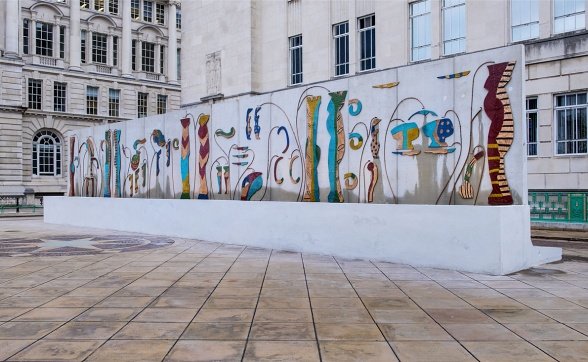
Betty Woodman, Liverpool Fountain, 2016. Installation view at George’s Dock Ventilation Tower Plaza. Photo: Joel Chester Fildes
Woodman’s work is part of more than 50 public collections and has been the subject of numerous solo exhibitions at museums and galleries internationally, and she was also the first female artist to have a major retrospective at the Metropolitan Museum of Art in New York. For Liverpool Biennial 2016, she created Liverpool Fountain, a functioning fountain installed near the city's waterfront. It refers to classical imagery and architectural decoration, as well as Egyptian art, Italian Baroque and paintings by Picasso and Matisse.
10. Coco Fusco

Coco Fusco, TED Ethology - Primate Visions of the Human Mind, 2015. Image courtesy Alexander Gray Associates. © 2016 Coco Fusco
At Liverpool Biennial 2016, Fusco continued her practice of using large-scale projections, closed-circuit television and web-based live streaming performance. In Observations of Predation in Humans: A Lecture by Dr. Zira, which was co-commissioned with Frieze Projects, she presented herself as a character from Planet of the Apes. Drawing from primatology, neuroscience, and evolution, the lecture provided a commentary on contemporary forms of aggression and predatory behaviour in the context of post-industrial societies.
11. Agnès Varda
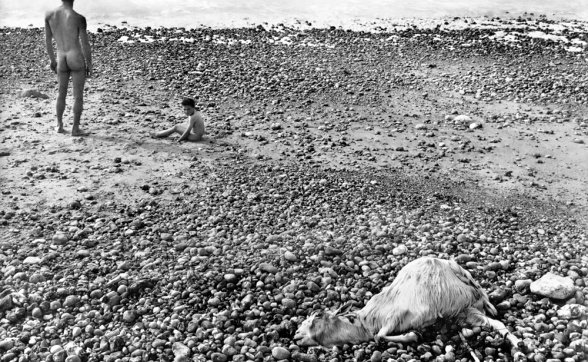
Agnès Varda, Ulysse (film still), 1982. Image courtesy the artist
Agnès Varda began her career studying art history at the École du Louvre while taking night classes in photography. With no film training, she wrote and directed La pointe courte (1954), considered to be the beginning of French New Wave filmmaking. In 2017, she was awarded an Academy Honorary Award for her contributions to cinema, making her the first female director to receive such an award. In 2018, Varda is one of the participating artists for Liverpool Biennial 2018: Beautiful world, where are you?
This year, Liverpool Biennial celebrates 20 years of presenting contemporary art in the city and region. Watch out for more blog posts and follow us on social media as we take a look back at the highlights.
Liverpool Biennial
55 New Bird Street
Liverpool L1 0BW
- T +44 (0)151 709 7444
- info@biennial.com
Liverpool Biennial is funded by
Founding Supporter
James Moores
